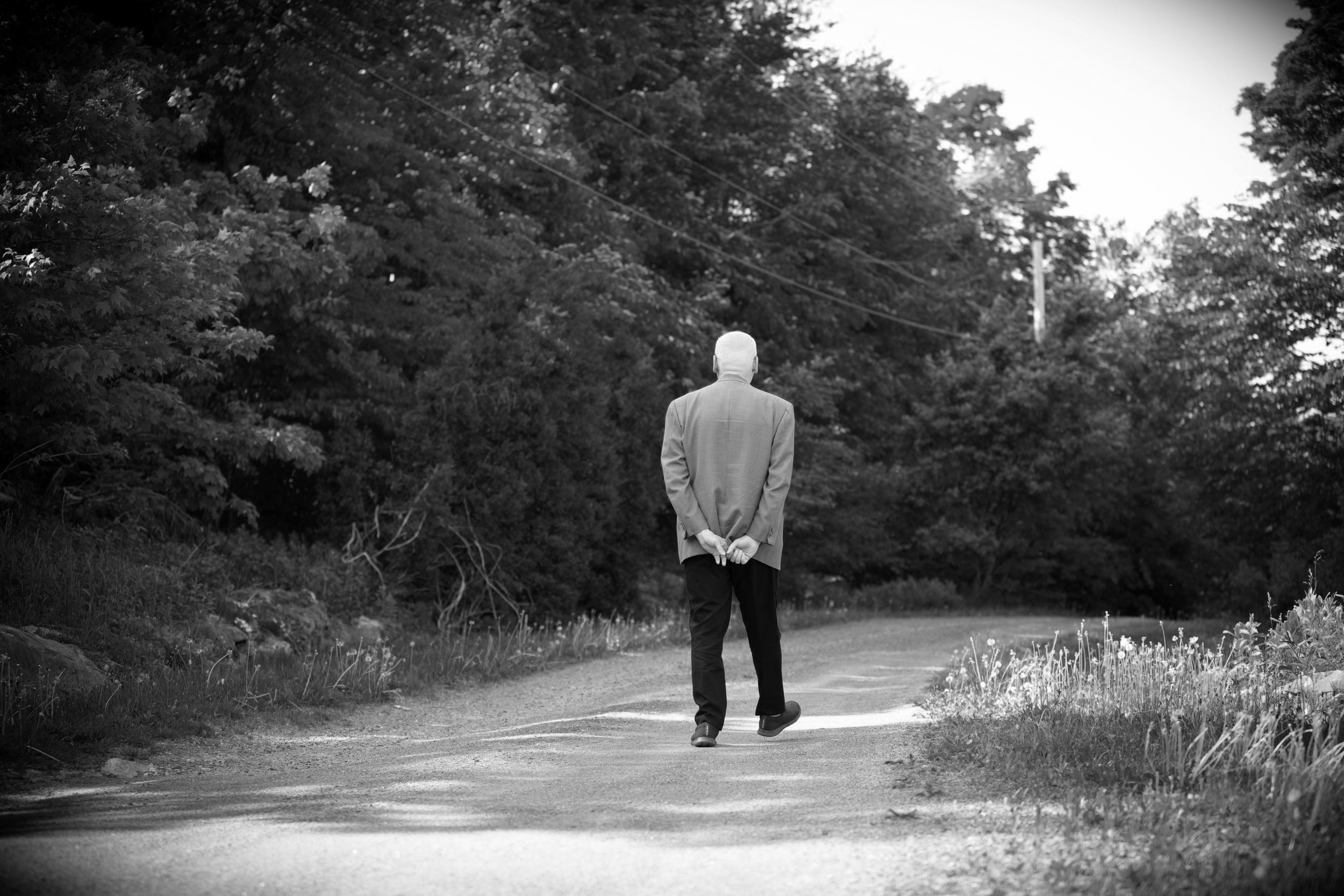
Welcome to my Blog
Thank you for stopping by. This space is where I share research, reflections, and practical tools drawn from my experience as a marriage and family therapist.
Are you a couple looking for clarity? A professional curious about the science of relationships? Or simply someone interested in how love and resilience work? I’m glad you’ve found your way here. I can help with that.
Each post is written with one goal in mind: to help you better understand yourself, your partner, and the hidden dynamics that shape human connection.
Grab a coffee (or a notebook), explore what speaks to you, and take what’s useful back into your life and relationships. And if a post sparks a question, or makes you realize you could use more support, I’d love to hear from you.
Be Well, Stay Kind, and Godspeed.
~Daniel
P.S.
Feel free to explore the categories below to find past blog posts on the topics that matter most to you. If you’re curious about attachment, navigating conflict, or strengthening intimacy, these archives are a great way to dive deeper into the research and insights that I’ve been sharing for years.
- Attachment Issues
- Coronavirus
- Couples Therapy
- Extramarital Affairs
- Family Life and Parenting
- How to Fight Fair
- Inlaws and Extended Families
- Intercultural Relationships
- Marriage and Mental Health
- Married Life & Intimate Relationships
- Neurodiverse Couples
- Separation & Divorce
- Signs of Trouble
- Social Media and Relationships
- What Happy Couples Know
John C. Lilly and the Edges of Consciousness: From Isolation Tanks to Therapy Rooms
Some scientists spend their careers tidying up data.
John C. Lilly spent his tearing holes in the curtain of reality. A physician and neuroscientist by training, Lilly began as a careful brain researcher.
But somewhere between mapping monkey neurons and building the first sensory isolation tank, he decided science wasn’t asking nearly big enough questions.
What happens to the mind when all stimulation is removed? Could dolphins be taught human language? Could psychedelics unlock a cosmic operating system?
Lilly chased each of these questions with the same intensity — and not always with the same caution.
His life was a mix of genuine discovery, hubris, and a kind of reckless mysticism that makes him one of the strangest figures in the history of consciousness studies.
Nikola Tesla and the Vibrations of Consciousness: What the Forgotten Genius Still Teaches Us
When most people hear the name Nikola Tesla, they picture lightning bolts, coils sparking like something out of Frankenstein, or maybe a shiny electric car.
But Tesla’s true obsession wasn’t electricity — it was vibration.
He believed the entire universe was built on frequency, resonance, and energy.
That conviction put him somewhere between a genius and a mystic.
And while he never offered couples therapy, he left us metaphors — resonance, harmony, tuning — that describe relationships and consciousness surprisingly well. He was an engineer of machines, yes, but also of metaphors that still hum with relevance.
Itzhak Bentov and the CIA’s Gateway Process: The Holographic Theory of Consciousness
Itzhak Bentov and the Mechanics of Consciousness: From Pacemakers to the CIA’s Gateway Process
What if your heart wasn’t just pumping blood, but also helping tune your brain into the frequencies of the universe?
That was the audacious claim of Itzhak Bentov, an Israeli-American inventor who straddled the worlds of biomedical engineering and mystical speculation.
He designed medical devices that saved lives, yet he’s best remembered for arguing that consciousness itself is a kind of vibration — one that can stretch beyond the body and even into the cosmos.
Tylenol and Pregnancy: Harvard Study discusses Acetaminophen, Autism and ADHD Risks
For decades, acetaminophen—paracetamol to much of the world, Tylenol if you’re in a U.S. pharmacy aisle—has been the quiet, trusted companion of pregnant women.
A fever? Take two. A pounding headache? Same advice. Back pain in month seven? Doctors have nodded yes for years.
It’s not hard to see why. Nearly half of pregnant women in the UK and about two-thirds in the U.S. take it at some point. For decades, it was waved through as the “safest option.”
But now, researchers from Harvard and Mount Sinai are urging caution.
After reviewing more than 100,000 cases, their conclusion is sobering: prenatal acetaminophen use may be linked to higher risks of autism spectrum disorder (ASD) and attention deficit hyperactivity disorder (ADHD).
Not proof. Not a verdict. But the strongest evidence so far that this everyday drug isn’t as risk-free as we once believed.
Workplace Chemicals and Autism: How Parents’ Jobs May Influence Autism Severity
We’ve long known that autism is shaped by both genetics and environment.
The debate usually circles around diagnosis — what increases the risk that a child will be on the spectrum.
But a new study asks a harder question: could a parent’s job affect how severe a child’s autism symptoms are?
Published in the International Journal of Hygiene and Environmental Health, the research suggests that parents’ workplace exposures to chemicals like plastics, phenols, and pharmaceuticals may influence not just whether a child has autism, but how intensely the condition shows up in language, cognition, behavior, and daily living skills.
For families already navigating autism, that’s a game-changer.
ChatGPT as Therapist? What Research Says, What Americans Are Doing, and a Few Practical Interventions for Marriage and Family Therapists
It’s 2:17 a.m. in Boston. A college sophomore, already waitlisted for campus counseling, opens her laptop. She doesn’t write in her journal. She opens ChatGPT.
“Why do I hate myself so much?” she types.
The machine—tireless, polite, available—answers.
This is not science fiction. It’s American culture in 2025. Therapy is expensive, therapists are scarce, loneliness is epidemic, and the machines are always awake.
The question isn’t whether people are using ChatGPT as a therapist.
They are. The question is how, how often, how well—and what happens when they do.
Is ChatGPT Being Used as Therapy in America?
Modern American Couples Therapy: The History, Science, and the Future of Love
Love is glorious, irritating, necessary, and—at least in America—relentlessly self-examined.
We argue about dishes, whisper promises in bed, and occasionally threaten to pack a bag and live in the woods. Couples therapy is where all of this gets sorted out.
Once stigmatized as a last resort, it’s now an ordinary part of American life, as much about prevention as repair.
This guide traces the arc of American couples therapy: where it came from, what makes it unique, and why it matters in a country obsessed with both independence and intimacy.
What to Text After a Fight in a Long-Distance Relationship (Without Making Things Worse)
Why Texting After a Fight Feels Harder
Long-distance relationship fights land harder. There’s no softening hug, no shared silence to dissipate tension. All you have are words—digits on a screen that come without tone or presence.
That’s why your first message after a fight carries weight. It doesn’t need to resolve everything. It just needs to reopen the door.
Long-Distance Love Requires Extra Care
LDRs ask for more trust, more effort, and more emotional craftsmanship. According to research, long-distance couples often feel more anxiety around communication gaps—but those who succeed develop stronger connection habits (Jiang & Hancock, 2013).
In therapy, I've seen couples transform conflict into deeper intimacy by treating communication like a practiced skill, not a given.
After fights, that craft becomes everything.
How to Rebuild Connection After Mutual Trust Issues
The fight is over, but the quiet is worse. You’re sitting across from each other, and it feels like there’s a ledger between you — texts, promises broken, things said and unsaid.
Neither of you is innocent, and both of you know it.
That’s the tricky part about mutual betrayal.
When one person breaks trust, the roles are clear: who’s injured, who’s at fault. But when you’ve both done damage? No one gets to stand on high ground. It’s a stalemate.
And yet, not all stalemates mean the game is over. Sometimes they’re just the pause before you figure out how to move again.
A Neuroscience Guide to Banishing Stress, Self-Doubt, and Loneliness
The modern wellness industry promises a fix for everything—powders for your cortisol, books to “hack” your brain, apps to engineer happiness.
Neuroscience offers a humbler message: your brain is not a machine to be optimized, but a living system to be understood.
Treat it less like a gadget and more like a pet: it thrives on consistency, kindness, and patience.
When we ignore this, three forces often take hold—loneliness, chronic stress, and self-doubt. They do more than make us miserable; they change the brain itself.
But neuroscience also shows us how to push back—without buying miracle cures.
The Neuroscience of Rejection: Why It Hurts the Brain
Social rejection neuroscience has revealed something many already suspect: exclusion doesn’t just bruise the ego, it activates the same brain regions as physical pain.
Research shows that being left out triggers cortisol, the body’s stress hormone, while also lowering a sense of belonging and sometimes sparking aggression (Blackhart et al., 2009).
Chronic rejection is even linked to long-term mental health struggles, including depression and anxiety, as well as physical health risks (Slavich et al., 2010).
Evolution offers an explanation.
For early humans, being excluded from the group meant danger. Without social bonds, survival chances plummeted. Today, the brain’s warning system still interprets rejection as a threat to well-being.
Functional MRI studies show that the anterior cingulate cortex—the same region active in physical pain—lights up when people are excluded from something as trivial as a virtual ball-tossing game (Eisenberger et al., 2003).
But newer findings complicate this picture. Follow-up research suggests the anterior cingulate also responds to surprise or expectation violation, not just social pain (Somerville et al., 2006).
In other words, rejection may hurt partly because it confounds predictions: you thought you belonged, but you were wrong.
Love in the Off Hours: Expressing Love Languages When Your Partner Works Night Shifts
The garage door creaks open at six in the morning. Your partner comes home, eyes half-closed, the night shift clinging to their skin. You’re standing by the coffee pot, dressed for daylight. A quick kiss, a muttered “love you,” and the exchange is over.
Not quite intimacy. More like ships passing in the dawn.
Shift work bends time until love feels like a baton pass in a race no one signed up for.
You’re still a couple, but your hours don’t line up. This is where love languages either adapt or wither.
Night work is not just hard on the body — it scrambles relationships. Studies show that irregular hours increase stress, disrupt sleep, and heighten conflict at home (Jansen et al., 2019; Gadeyne et al., 2018).
It’s not that affection disappears. It’s that the normal channels — meals together, evenings side by side, a weekend with both people awake — vanish.
The five “love languages” don’t disappear, but they get somewhat distorted. They might require new forms of expression.











